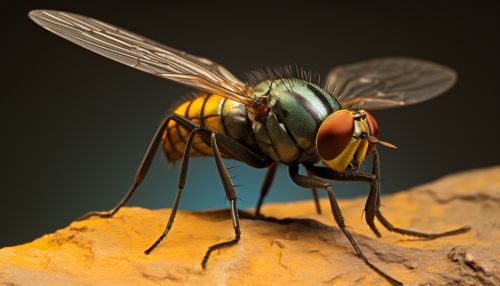True Flies
Introduction
True flies, or members of the order Diptera, are a large group of insects that includes over 150,000 species worldwide. They are characterized by their single pair of functional wings, with the second pair reduced to small, knob-like structures called halteres that aid in balance during flight. This unique feature distinguishes true flies from other insects and is a key factor in their evolutionary success.


Evolution and Diversity
The Diptera order is incredibly diverse, with species ranging in size from barely visible to the naked eye to over 60 mm in length. They are found in virtually every habitat on Earth, from the deepest oceans to the highest mountains, and from the Arctic to the Antarctic. The order is divided into two suborders, the Nematocera and the Brachycera, which are further divided into over 150 families.
Morphology
True flies have a body divided into three sections: the head, thorax, and abdomen. The head houses the eyes, antennae, and mouthparts. The thorax bears the wings and legs, while the abdomen contains the digestive and reproductive organs. The morphology of true flies is highly variable, reflecting their wide range of lifestyles and habitats.
Life Cycle
Like all insects, true flies undergo complete metamorphosis, passing through four distinct stages: egg, larva, pupa, and adult. The duration of the life cycle varies greatly among species and is influenced by environmental conditions such as temperature and food availability.
Ecology
True flies play crucial roles in ecosystems as pollinators, decomposers, and as a food source for other animals. Some species are also important vectors of diseases, transmitting pathogens to humans and other animals.
Economic and Medical Importance
While many species of true flies are beneficial, some pose significant threats to human health and agriculture. For example, the mosquito is a vector for diseases such as malaria, dengue, and Zika virus, while the tsetse fly transmits sleeping sickness. Additionally, species such as the fruit fly and housefly can cause considerable damage to crops and livestock.
Conservation
Conservation efforts for true flies are often overlooked in favor of more charismatic species. However, given their ecological importance and the threats they face from habitat loss, pollution, and climate change, there is a growing recognition of the need to conserve these often underappreciated creatures.
